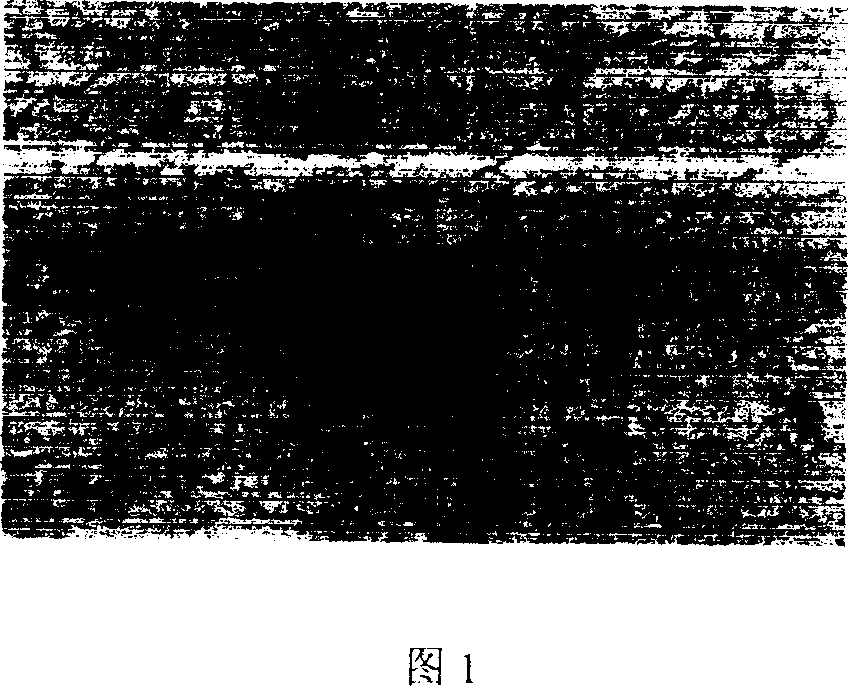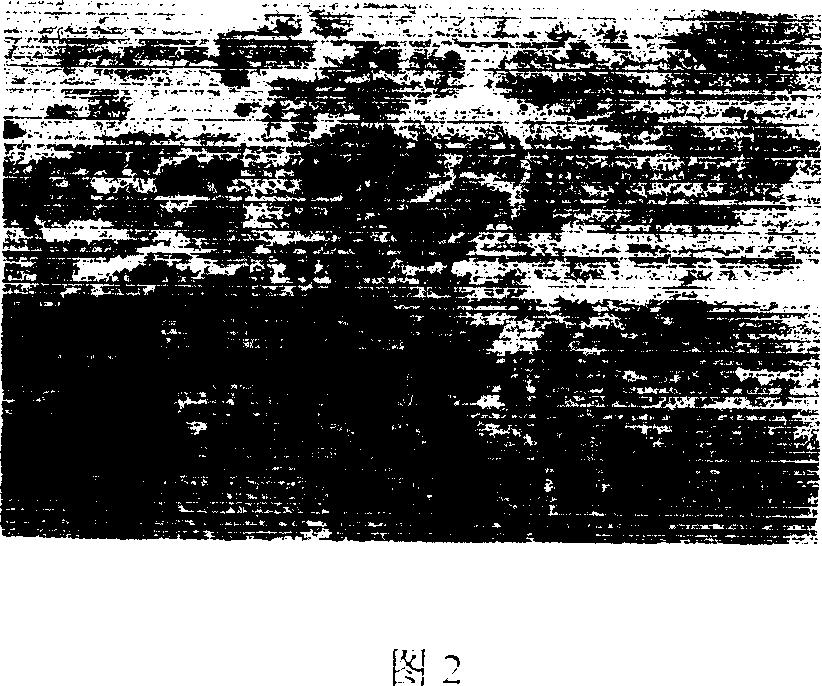Method for planting esoderma/endothelial cell on inner surface of artificial blood vessel
A technology of artificial blood vessels and endothelial cells, which is applied to the device of human tubular structure, the culture device of tissue cells/viruses, blood vessels, etc., to achieve the effect of inhibiting excessive proliferation and increasing adhesion ability.
- Summary
- Abstract
- Description
- Claims
- Application Information
AI Technical Summary
Problems solved by technology
Method used
Image
Examples
example 1
[0034] Example 1. Static inoculation on murine carotid artery vascular graft material with cell matrix removed, followed by a stepwise increase in fluid shear stress, while the vessel was rotated around its central axis to cultivate endothelial cells
[0035] The carotid artery of Wistar rats whose endothelial cells were removed by freezing method was inoculated at 10 dyns / cm 2 Rabbit primary arterial endothelial cells acclimated to shear stress in the intima were inoculated as follows: the intima of the mouse carotid artery from which the endothelial cells were removed by freezing was washed three times with PBS solution, and the cultured primary rabbit endothelial cells were washed with 0.1 % trypsinization, collect the cells, the cell concentration is about 1×10 6 cells / cm 2 , inoculated the collected cells on the intima of blood vessels at 37°C, 5% CO 2 Static culture in the incubator for about 3 days, after the cells have fused into a single layer, then, the inoculated ...
example 2
[0036] Example 2. Inoculation on the mouse carotid artery vascular graft material with the cell matrix removed and simultaneously applying a stepwise increase in fluid shear stress, while the blood vessel was rotated around its central axis to cultivate endothelial cells
[0037] Take the carotid artery of Wistar rats whose endothelial cells were removed by freezing method, and inoculate rabbit primary arterial endothelial cells on the intima. The cultured primary rabbit endothelial cells were digested with 0.1% trypsin, the cells were collected, and the cell concentration was about 1×10 6 cells / cm 2 , the collected cells were inoculated into the intima of the blood vessel, and at the same time, a stepwise increase of fluid shear stress was applied to the endothelial cells, and the initial value of the shear stress was about 5dyns / cm 2 , the step is to increase 0.1dyns / cm every 1h 2 , the required time is about 12h, and then change the step to increase 1.0dyns / cm every 1h 2...
example 3
[0038] Example 3. Inoculation and simultaneous application of pulsating, step-wise increasing fluid shear stress on goat carotid artery graft material without cell matrix, while the vessel rotates around its central axis to cultivate endothelial cells
[0039] Take the goat carotid artery from which endothelial cells have been removed by enzymatic digestion, and inoculate the primary cultured human umbilical vein endothelial cells on the intima. , digest the cultured primary human umbilical vein endothelial cells with 0.1% trypsin, collect the cells, the cell concentration is about 1×10 6 cells / cm 2 , the collected cells were inoculated into the intima of the blood vessel, and a pulsating, stepwise increasing fluid shear stress was applied to the endothelial cells at the same time, the pulsation frequency was 80 Hz, and the initial value of the loading shear stress was about 5 dyns / cm 2 , the step is to increase 0.3dyns / cm every 1h 2 , the time required is about 12h, and the...
PUM
 Login to View More
Login to View More Abstract
Description
Claims
Application Information
 Login to View More
Login to View More - R&D
- Intellectual Property
- Life Sciences
- Materials
- Tech Scout
- Unparalleled Data Quality
- Higher Quality Content
- 60% Fewer Hallucinations
Browse by: Latest US Patents, China's latest patents, Technical Efficacy Thesaurus, Application Domain, Technology Topic, Popular Technical Reports.
© 2025 PatSnap. All rights reserved.Legal|Privacy policy|Modern Slavery Act Transparency Statement|Sitemap|About US| Contact US: help@patsnap.com


